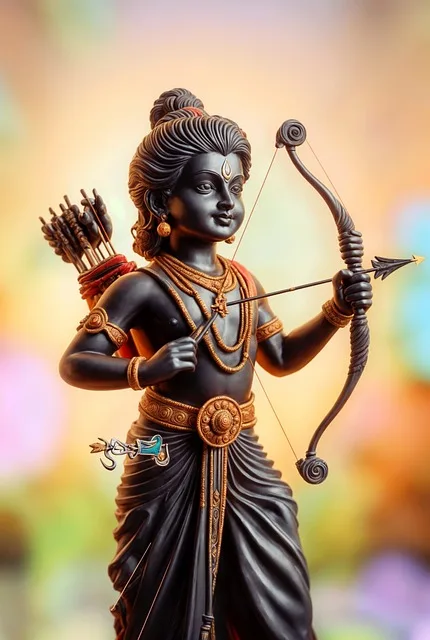
Ayodhya, a name that resonates with deep cultural and spiritual significance, stands as a beacon of faith and history in the Indian subcontinent. At the heart of this ancient city lies the Ram Mandir, a temple that has not only been a cornerstone of religious devotion but also a symbol of the rich tapestry of Indian culture and heritage.
In this blog post, we will explore the various aspects of Ayodhya, such as its history, geography, architecture, and culture, and see why it is one of the most revered and visited places in India.
Contents
History of Ayodhya
Ayodhya is one of the oldest and most sacred cities in India, with a history that spans thousands of years. According to the Hindu epic Ramayana, Ayodhya is the birthplace of Lord Rama, the seventh avatar of Vishnu, and the setting of his life story. Ayodhya was also the capital of the ancient kingdom of Kosala, ruled by Rama’s father, Dasharatha.
Ayodhya has also been a prominent centre of Buddhism and Jainism, as it was visited and lived by Gautama Buddha and Mahavira, the founders of these religions. The Jain texts also describe Ayodhya as the birthplace of five Tirthankaras, or spiritual teachers, namely Rishabhanatha, Ajitanatha, Abhinandananatha, Sumatinatha, and Anantanatha.
Ayodhya has witnessed many dynasties and empires, such as the Mauryans, the Guptas, the Kanauj kingdom, the Delhi Sultanate, the Jaunpur Kingdom, and the Mughals. It has also been a site of conflict and controversy, as it was the location of the Babri Masjid, a mosque built by the Mughal emperor Babur in the 16th century, which was believed to have replaced a temple that stood at the birth spot of Rama. The mosque was demolished by a Hindu mob in 1992, leading to communal violence and legal disputes.
In 2019, the Supreme Court of India ruled that the disputed land belonged to the government and ordered it to be handed over to a trust to build a Hindu temple, while Muslims were given land nearby to construct a mosque. The construction of the Ram Mandir commenced in August 2020 and the temple was consecrated with the deity of Balak Ram on 22 January 2024.
Geography of Ayodhya
Ayodhya is situated on the banks of the Sarayu River, also known as the Ghaghara or the Saryu, in the state of Uttar Pradesh. It is the administrative headquarters of the Ayodhya district and the Ayodhya division. It has an average elevation of 93 meters (305 feet) and covers an area of 120.8 square kilometres (46.6 square miles).
Ayodhya has a subtropical climate, with hot summers and mild winters. The average annual temperature is 25.4 °C (77.7 °F), with the highest temperature reaching 45 °C (113 °F) in May and the lowest temperature dropping to 4 °C (39 °F) in January. The average annual rainfall is 1,027 millimetres (40.4 inches), with most of the rain occurring during the monsoon season from June to September.
Ayodhya is well connected by road, rail, and air. It is about 134 kilometres (83 miles) from Lucknow, the capital of Uttar Pradesh, and about 600 kilometres (373 miles) from Delhi, the capital of India. It has a railway station that connects it to major cities like Varanasi, Allahabad, Gorakhpur, and Delhi. It also has an airport, the Ayodhya Airport, which was inaugurated in November 2020 and operates domestic flights to Delhi, Mumbai, and Kolkata.
 Architecture of Ayodhya
Architecture of Ayodhya
Ayodhya is home to many temples, monuments, and structures that reflect its rich and diverse architectural heritage. The most prominent and majestic of them is the Ram Mandir, a Hindu temple dedicated to Lord Rama, which stands as a magnificent example of Nagara-style temple architecture, characterized by its towering spires or shikharas.
The Ram Mandir, built using pink sandstone, sprawls across a vast area of 2.7 acres and has a built-up area of 57,400 square feet. It is a three-story structure, with each floor serving a distinct purpose. The ground floor is dedicated to Lord Rama, creating a sacred space for devotees to offer their prayers and seek blessings. The second floor pays homage to Lord Hanuman, a devoted disciple of Lord Rama. Finally, the third floor houses a museum that showcases the history and culture of Ayodhya.
The temple complex also features a yajnashala, a hall used for conducting Hindu fire rituals, a community kitchen, and a medical facility. The temple is surrounded by a rectangular compound wall, called the parkota, which measures 732 meters by 14 feet. The temple also has four corner temples dedicated to Surya Dev, Devi Bhagwati, Ganesh Bhagwan, and Bhagwan Shiv, and two arm temples dedicated to Maa Annapurna and Lord Hanuman. The temple complex also has proposed temples for Maharshi Valmiki, Maharshi Vashishtha, Maharshi Vishwamitra, Maharshi Agastya, Nishad Raj, Mata Shabri, and Devi Ahilya.
Apart from the Ram Mandir, Ayodhya also has many other temples and shrines that are worth visiting, such as the Kanak Bhawan, the Hanuman Garhi, the Nageshwarnath Temple, the Ram ki Paidi, the Mani Parbat, the Treta ke Thakur, the Chhoti Devkali Mandir, the Bahu Begum ka Maqbara, and the Janki Mahal.
Culture of Ayodhya
Ayodhya is a city that celebrates its culture and traditions with fervour and devotion. It is a melting pot of various religions, languages, cuisines, and arts, that have enriched its cultural fabric over the centuries. Ayodhya is known for its festivals, fairs, music, dance, and literature, which reflect its vibrant and diverse cultural identity.
Some of the major festivals celebrated in Ayodhya are Ram Navami, the birthday of Lord Rama, which falls in March or April; Diwali, the festival of lights, which falls in October or November; and Ram Vivah Utsav, the wedding anniversary of Lord Rama and Sita, which falls in November or December. These festivals are marked by grand processions, rituals, prayers, cultural programs, and fireworks, that attract thousands of pilgrims and tourists every year.
Ayodhya is also known for its fairs, such as the Ramayan Mela, the Parikrama Mela, the Shravan Jhula Mela, and the Panchkosi Parikrama Mela, which are held at different times of the year and offer a glimpse of the local culture, crafts, and cuisine. Ayodhya is also famous for its music and dance, such as the Ramlila, a theatrical performance of the Ramayana, the Dhrupad, a classical vocal genre, and the Kathak, a classical dance form.
Ayodhya has also been a centre of literature and learning, as it has produced many eminent poets, writers, scholars, and saints, such as Tulsidas, the author of the Ramcharitmanas, the Awadhi version of the Ramayana, Kabir, a mystic poet and saint, Ramanand, a Vaishnava saint and reformer, and Swami Narayan, the founder of the Swaminarayan sect.
Conclusion
Ayodhya is a city that offers a unique and enriching experience for anyone who visits it. It is a city that blends the ancient and the modern, the sacred and the secular, the diverse and the unified. It is a city that showcases the glory and the grace of Indian culture and heritage. It is a city that invites you to explore its beauty and its mystery and to discover its charm and its spirit.
FAQs
- What is the significance of Ayodhya in Hinduism?
Ayodhya, believed to be the birthplace of Lord Rama, holds immense religious significance for Hindus. It is an ancient city mentioned in the Ramayana, one of the two major Sanskrit epics of India. Many devout Hindus consider a pilgrimage to Ayodhya as a lifetime goal.
- What is the current status of the Ram Mandir construction?
The Ram Mandir construction is nearing completion and a grand inauguration is expected on January 22nd, 2024. This marks a historic moment for many Hindus around the world.
- Beyond the Ram Mandir, what other sites can I visit in Ayodhya?
Ayodhya boasts a rich tapestry of heritage sites beyond the Ram Mandir. Explore the Kanak Bhavan palace, meditate at the serene ghats along the Sarayu River, or delve into the Ramayana’s epic story at the Ram Katha Museum.
- What is the best time to visit Ayodhya?
The ideal time to visit Ayodhya depends on your preferences. October to March offers pleasant weather, while major festivals like Diwali and Ram Navami attract large crowds and offer a vibrant cultural experience.
- What are some things to keep in mind while visiting Ayodhya?
Dress modestly, respecting the religious significance of the city. Be mindful of local customs and traditions. Photography restrictions may apply in certain areas. It’s always helpful to research and plan your trip beforehand.

 Architecture of Ayodhya
Architecture of Ayodhya